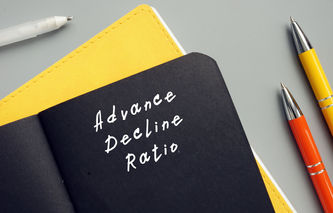Definition
The term advance decline line refers to a chartist measure of the cumulative number of stocks advancing over time. The advance decline line is a technical indicator used to understand the breadth of a market decline or advance.
Calculation
Advance / Decline Line = Stocks Advancing - Stocks Declining + Prior Period's Value
Where:
Prior Period's Value is the Advance / Decline Line's value in the prior reporting period, which is typically the prior trading day.
Explanation
Also referred to as the A/D Line, the advance decline line measures the breadth of a market's movement. The line allows chartists and technical analysts to understand if an increase or decrease in a market index, such as the S&P 500, is driven by a few stocks or by a larger number of securities.
The A/D line differs from the A/D ratio in that it shows the user the cumulative number of advancing securities. As such, the A/D line is not "normalized" like the ratio. As stocks are added to, or removed from, the benchmark index they can introduce "noise" that needs to be taken into consideration. For example, the NASDAQ line can fall even if the NASDAQ index is rising. This can happen when companies are delisted from the exchange and index. The NYSE is less prone to this effect due to its more rigorous listing requirements.
The A/D line can be interpreted in a number of ways:
If the index is advancing, and the A/D line has a positive slope, this is a positive sign for the market, since a relatively large number of stocks are contributing to the increase.
If the index is declining, and the A/D line has a negative slope, this is also a positive sign for the market, since a relatively small number of stocks are contributing to the decline.
Divergence occurs when the market is moving in one direction and the A/D line is moving in the opposite direction.
Bullish divergence occurs when an index is declining and the A/D line increases. This type of divergence can signal the reversal of the downward trend in the price of stocks and the start of a bull market.
Bearish divergence occurs when an index is increasing and the A/D line decreases. This type of divergence can signal the reversal of the upward trend in the price of stocks and the start of a bear market.




